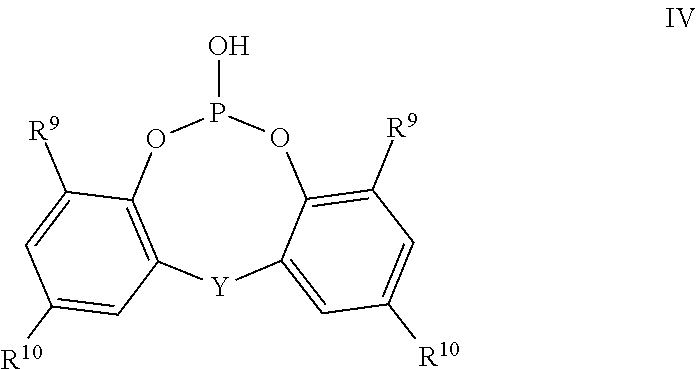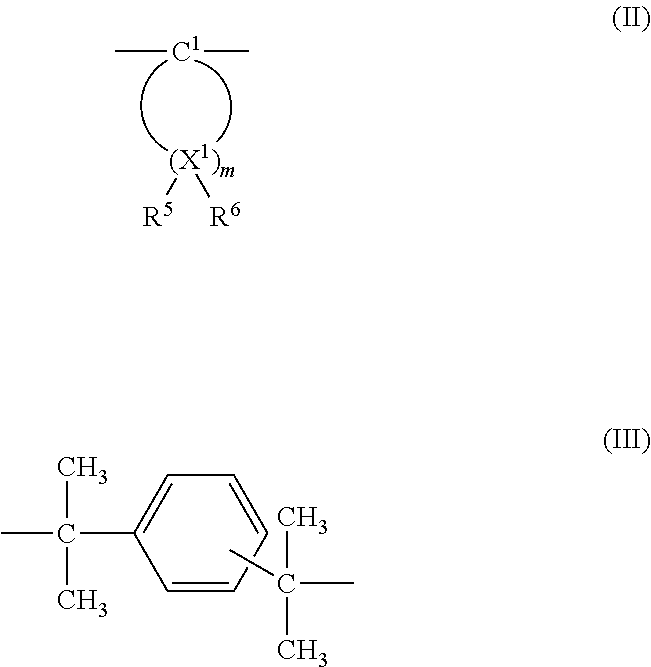Antistatic polycarbonate moulding compositions
a polycarbonate and composition technology, applied in the field of polycarbonate compositions, can solve the problems of affecting the optical performance, troublesome and functionally limited dust deposits on high-gloss moulded articles, and widespread accumulation of dust with the formation of dust figures, etc., to achieve improved heat distortion resistance, low-temperature strength, and processing stability
- Summary
- Abstract
- Description
- Claims
- Application Information
AI Technical Summary
Benefits of technology
Problems solved by technology
Method used
Image
Examples
examples
Component A
[0143]Linear polycarbonate based on bisphenol A having a relative solution viscosity of ηrel=1.306, measured in dichloromethane as solvent at 25° C. and in a concentration of 0.5 g / 100 ml.
Component B
[0144]Acrylonitrile-butadiene-styrene (ABS) precompound prepared from 33 wt. % of an ABS graft polymer prepared by the emulsion polymerisation process, 25 wt. % of an ABS graft polymer prepared by the mass polymerisation process and 43 wt. % of a styrene-acrylonitrile copolymer, wherein the ABS precompound has an A:B:S ratio of 18:20:62 wt. % and a gel content of 35 wt. % and the free, that is to say acetone-soluble, styrene-acrylonitrile copolymer in the ABS precompound has a weight-average molecular weight Mw (measured by GPC in acetone as solvent with polystyrene as standard) of 130 kg / mol.
Component C
[0145]Pebax MV1074 SP01 (Arkema, France): Polyether amide block copolymer having a nitrogen content of 3.4 wt. % and an acid number of 0.2 mg KOH / g. The polyether phase has a g...
PUM
| Property | Measurement | Unit |
|---|---|---|
| wt. % | aaaaa | aaaaa |
| MVR | aaaaa | aaaaa |
| atmospheric humidity | aaaaa | aaaaa |
Abstract
Description
Claims
Application Information
 Login to View More
Login to View More - R&D
- Intellectual Property
- Life Sciences
- Materials
- Tech Scout
- Unparalleled Data Quality
- Higher Quality Content
- 60% Fewer Hallucinations
Browse by: Latest US Patents, China's latest patents, Technical Efficacy Thesaurus, Application Domain, Technology Topic, Popular Technical Reports.
© 2025 PatSnap. All rights reserved.Legal|Privacy policy|Modern Slavery Act Transparency Statement|Sitemap|About US| Contact US: help@patsnap.com



